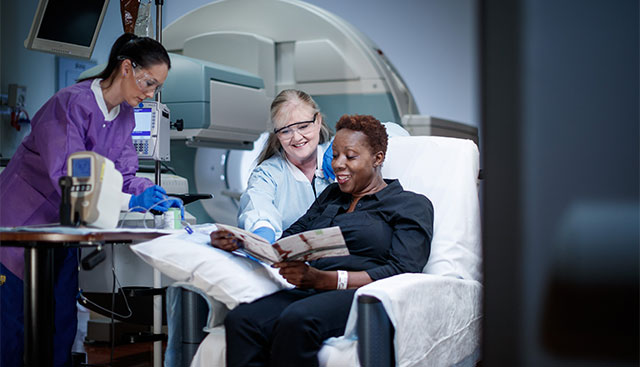
Health Care Equity Q&A
By Dr. Kedar Kirtane
Physician Director for the Engagement of Special Populations in Clinical Trials
What is "health care equity?"
Health care equity means ensuring that everyone has access to the same quality health care independent of who they are, where they come from or what they look like.
Why is health care equity important?
Health care equity is important because it ensures that everyone has the same opportunities for quality health care, and it ensures that resources are distributed equally and fairly.
What communities are most impacted by health disparities? Why?
Health care disparities can affect anyone. Quite often, people of different racial or ethnic groups cannot access or are not given the same opportunities for clinical trials or new treatments as other groups. The same can be true for people of different ages, sexual orientations, genders or even geographic locations. The reasons for this are complex but can include racism, financial difficulties, language differences, lack of support systems and many others.
How do health disparities relate to cancer screenings and prevention?
Health care disparities can be present before a cancer diagnosis occurs. The ability to get to a doctor and get a screening test like a mammogram, or a preventive strategy like a HPV vaccine, can be difficult for people who do not have quality resources close to them. Following up on abnormal tests or other things that require extra visits may require more time off from work than people can afford. It is no surprise that underrepresented groups have higher rates of preventable cancers since it is many times difficult to access standard screening and prevention for cancer.
What is Moffitt Cancer Center doing to address health care disparities?
Moffitt is heavily involved with the community we serve. Moffitt physicians, advanced practice professionals, nurses and other team members will routinely do community screenings for skin and oral cancers. We have programs to provide screening access for breast, lung, colorectal and prostate cancer.
Moffitt also has a growing number of research studies focused in reducing and eliminating cancer disparities. Through the George Edgecomb Society, nearly $1.7 million has been raised to support researchers working on reducing cancer disparities in the Black community. We also have a strong partnership with the Tampa Bay Community Cancer Network to help with education and prevention and to help increase access to care. Our center works with a variety of community organizations on outreach and partners on research to assess disparities and ensure more equitable care.
Are there specific cancers that are more prevalent in certain communities? Why?
As a group, Black patients have the highest death rate and shortest survival of any racial/ethnic group for most cancers. The reasons for this are complicated. As before, some of this can be explained by barriers to access, potentially due to bias, racism or financial difficulties or other factors. This is also true for different underrepresented groups depending on the cancer. It is very important that we as a center do a good job of enrolling patients on clinical trials.
Clinical trials offer innovative therapies for patients with hard-to-treat diseases, and national clinical trials enrollment is not representative of the U.S. population as a whole. If we as a system and country do a better job of enrolling diverse populations, the disparities would most certainly improve.
To learn more about Moffitt’s commitment to diversity, equity and inclusion or email Diversity@Moffitt.org
